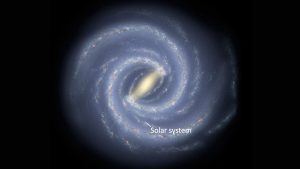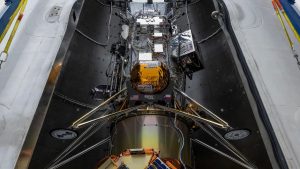Astronomers are enlisting AI to prepare for a data downpour

It’s a problem that will be repeated in other places over the coming decade. As astronomers construct giant cameras to image the entire sky and launch infrared telescopes to hunt for distant planets, they will collect data on unprecedented scales.
“We really are not ready for that, and we should all be freaking out,” says Cecilia Garraffo, a computational astrophysicist at the Harvard-Smithsonian Center for Astrophysics. “When you have too much data and you don’t have the technology to process it, it’s like having no data.”
In preparation for the information deluge, astronomers are turning to AI for assistance, optimizing algorithms to pick out patterns in large and notoriously finicky data sets. Some are now working to establish institutes dedicated to marrying the fields of computer science and astronomy—and grappling with the terms of the new partnership.
In November 2022, Garraffo set up AstroAI as a pilot program at the Center for Astrophysics. Since then, she has put together an interdisciplinary team of over 50 members that has planned dozens of projects focusing on deep questions like how the universe began and whether we’re alone in it. Over the past few years, several similar coalitions have followed Garraffo’s lead and are now vying for funding to scale up to large institutions.
Garraffo recognized the potential utility of AI models while bouncing between career stints in astronomy, physics, and computer science. Along the way, she also picked up on a major stumbling block for past collaboration efforts: the language barrier. Often, astronomers and computer scientists struggle to join forces because they use different words to describe similar concepts. Garraffo is no stranger to translation issues, having struggled to navigate an English-only school growing up in Argentina. Drawing from that experience, she has worked to put people from both communities under one roof so they can identify common goals and find a way to communicate.
Astronomers had already been using AI models for years, mainly to classify known objects such as supernovas in telescope data. This kind of image recognition will become increasingly vital when the Vera C. Rubin Observatory opens its eyes next year and the number of annual supernova detections quickly jumps from hundreds to millions. But the new wave of AI applications extends far beyond matching games. Algorithms have recently been optimized to perform “unsupervised clustering,” in which they pick out patterns in data without being told what specifically to look for. This opens the doors for models pointing astronomers toward effects and relationships they aren’t currently aware of. For the first time, these computational tools offer astronomers the faculty of “systematically searching for the unknown,” Garraffo says. In January, AstroAI researchers used this method to catalogue over 14,000 detections from x-ray sources, which are otherwise difficult to categorize.
Another way AI is proving fruitful is by sniffing out the chemical composition of the skies on alien planets. Astronomers use telescopes to analyze the starlight that passes through planets’ atmospheres and gets soaked up at certain wavelengths by different molecules. To make sense of the leftover light spectrum, astronomers typically compare it with fake spectra they generate based on a handful of molecules they’re interested in finding—things like water and carbon dioxide. Exoplanet researchers dream of expanding their search to hundreds or thousands of compounds that could indicate life on the planet below, but it currently takes a few weeks to look for just four or five compounds. This bottleneck will become progressively more troublesome as the number of exoplanet detections rises from dozens to thousands, as is expected to happen thanks to the newly deployed James Webb Space Telescope and the European Space Agency’s Ariel Space Telescope, slated to launch in 2029.
Processing all those observations is “going to take us forever,” says Mercedes López-Morales, an astronomer at the Center for Astrophysics who studies exoplanet atmospheres. “Things like AstroAI are showing up at the right time, just before these faucets of data are coming toward us.”






